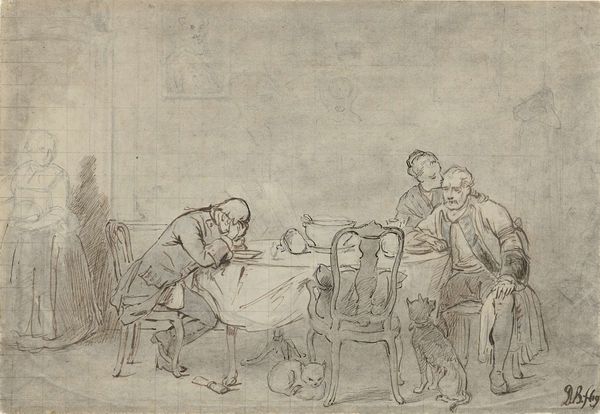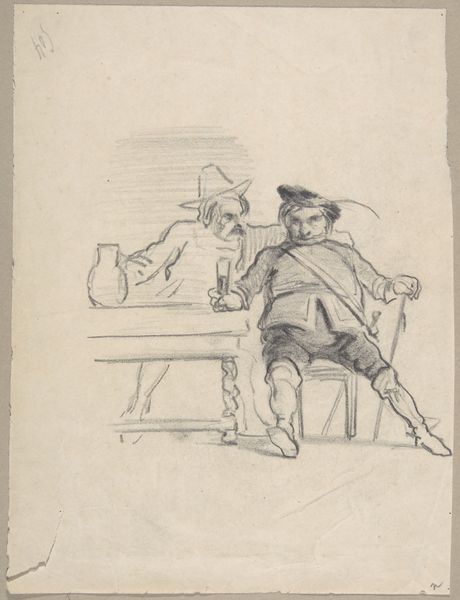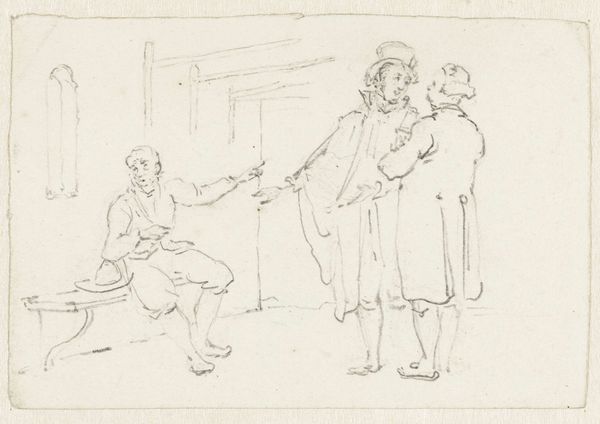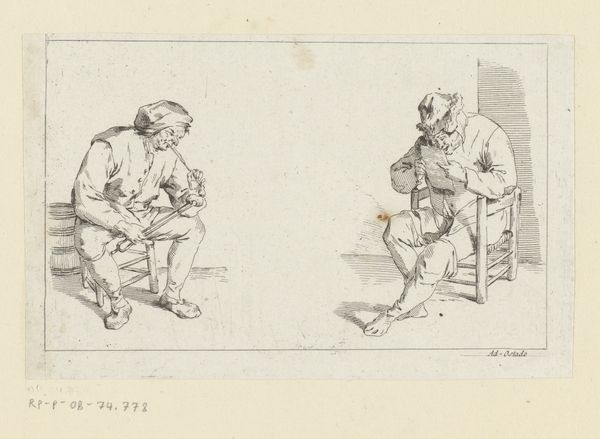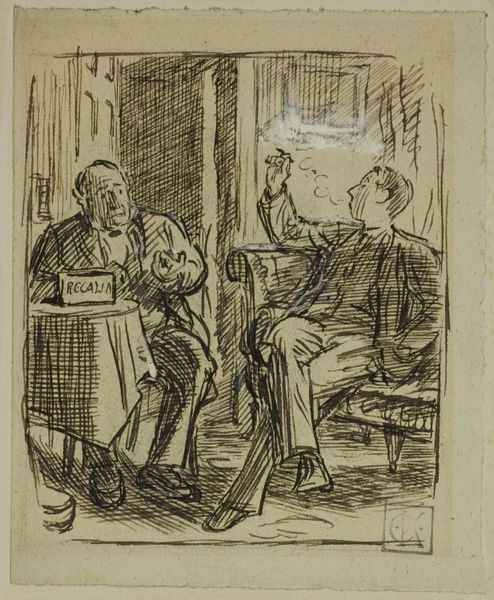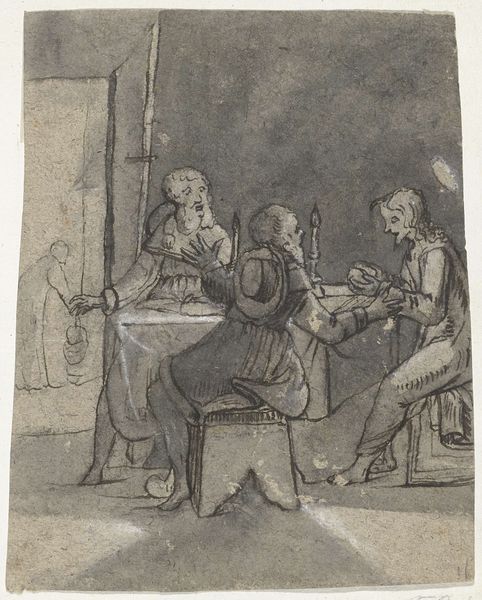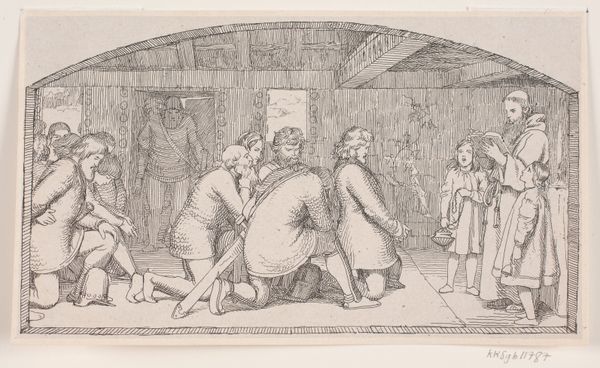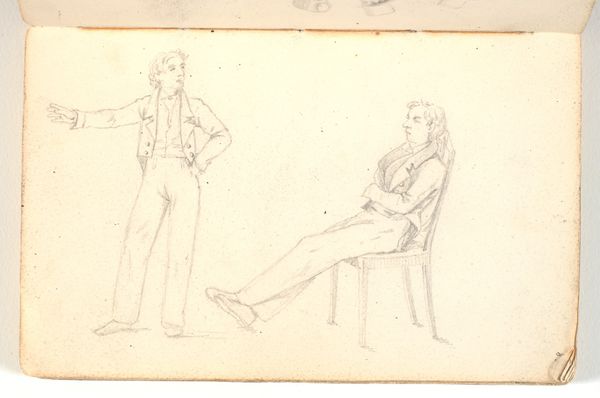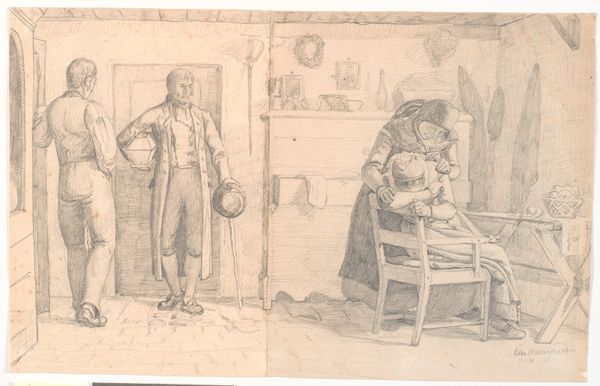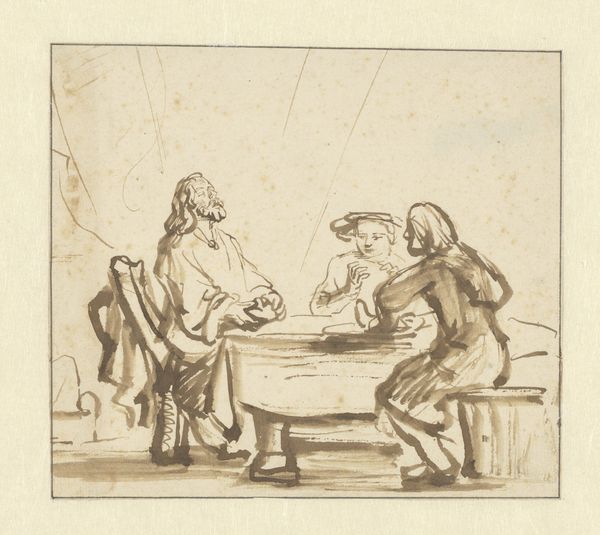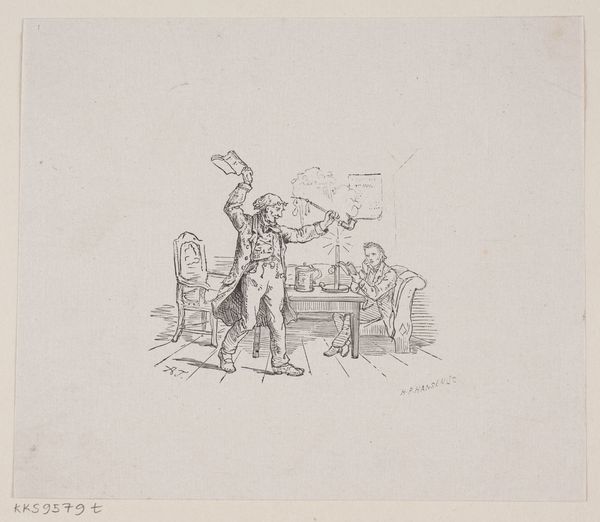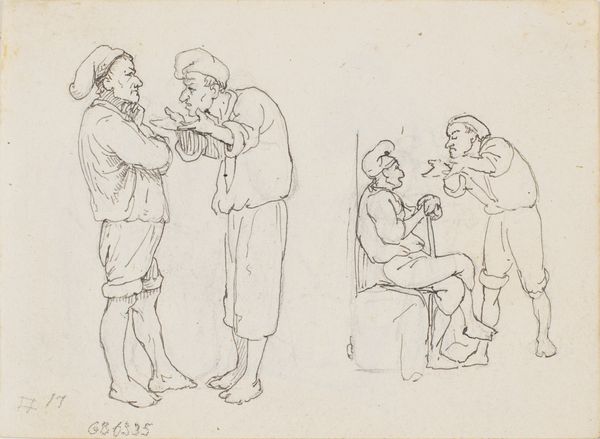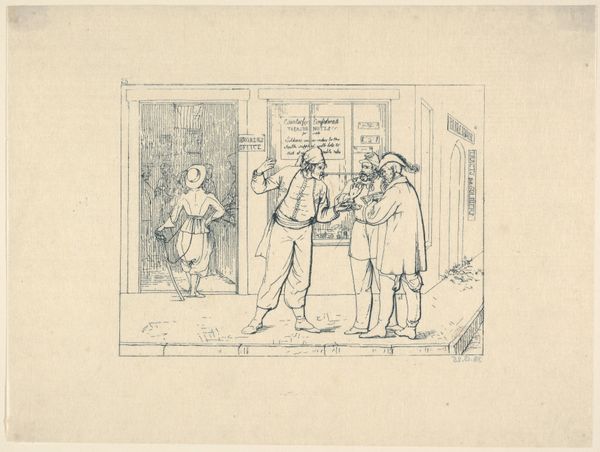
#
amateur sketch
#
toned paper
#
light pencil work
#
quirky sketch
#
pencil sketch
#
sketch book
#
personal sketchbook
#
idea generation sketch
#
sketchbook drawing
#
sketchbook art
Dimensions: height 240 mm, width 309 mm
Copyright: Rijks Museum: Open Domain
Editor: We’re looking at "Two Men Sitting at a Table in a Cafe," a pencil drawing by Henk Henriët, likely made between 1913 and 1936. It's a simple sketch, capturing a seemingly mundane moment. I’m curious – what details jump out at you? Curator: It’s the materiality that immediately draws me in. The artist's choice of humble materials – pencil on paper – speaks volumes. This wasn’t intended as a finished masterpiece but more likely as a study. I want to know where the paper comes from, how Henriët sourced his pencils. Were these readily available, mass-produced items or more specialized artist’s materials? Editor: So you see the context of the materials as key to understanding the piece? Curator: Absolutely. This sketch also raises questions about labor. What sort of work might these men be engaged in to find themselves in this setting? Are we looking at tradesmen, perhaps enjoying a midday break? How would the societal structures of the time impact this interaction between individuals, this everyday scene being recorded? I would even want to look into the labor practices around pencil production at the time. Were child labourers involved in graphite mining or pencil assembly, and if so, does that historical reality cast a different light on our appreciation of Henriët's materials? Editor: That's a very different lens than I usually use to look at art! It's interesting to consider those behind-the-scenes aspects. Curator: Exactly! Think about the chairs they're sitting on, the table between them. Were these mass produced objects? Or were they crafted locally? Are there identifiable cultural associations, reflecting the specific history and culture? Editor: It’s fascinating how this perspective shifts the focus. I typically focus on artistic expression, but your questions really bring in the whole web of production. I'll remember to look at the materiality differently from now on. Curator: And that awareness of process adds a richer layer to the experience.
Comments
No comments
Be the first to comment and join the conversation on the ultimate creative platform.
